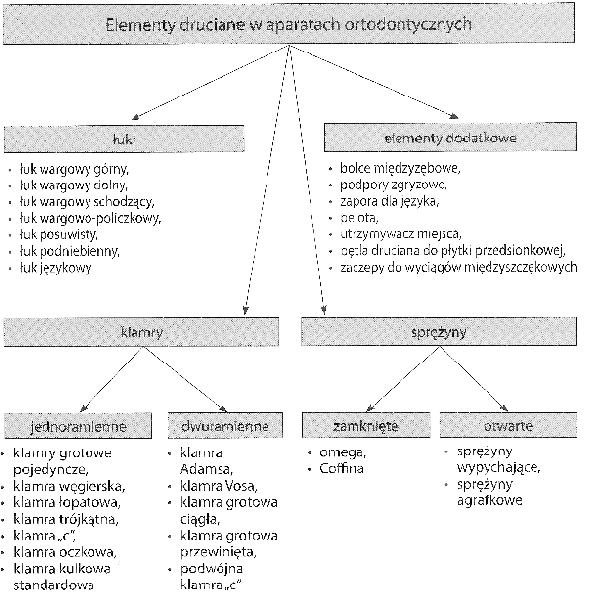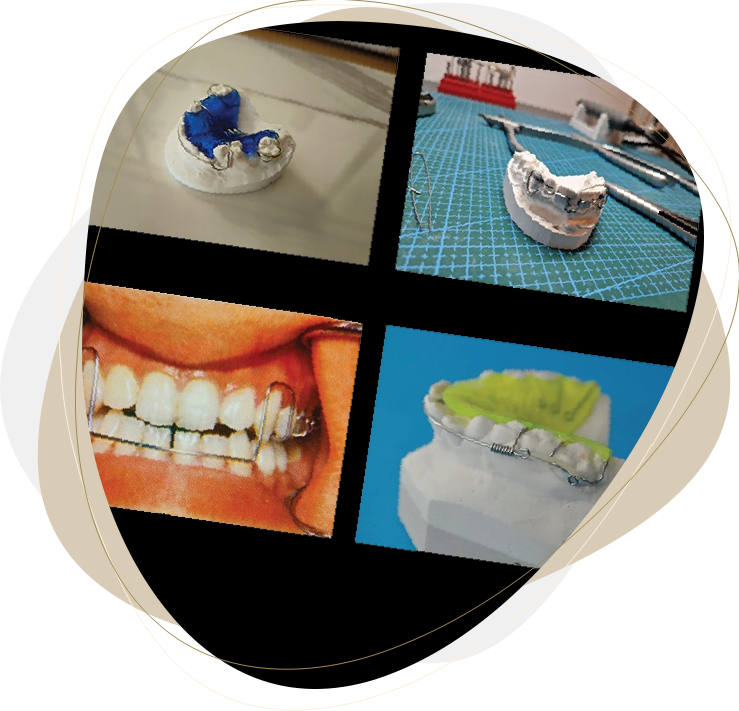Table of Contents
Main Types of Wire Components:
Lip Arches
- Retentive or Active
- A basic lip arch runs along the labial surfaces of the anterior teeth, looping in a "U" shape around the canines and is inserted into the plate between the canine and first premolar.
- Tigerstedt Arch -Used for closing the diastema between incisors.
- Finger Arch -Features vertical "M"-shaped loops.
- Petrick Arch -For distalization of canines.
- Advancing Arch: Operates with elastic tractions.
- Lip Arch with Pelota - Positioned away from the front teeth with an acrylic pad to retract the lip.
- Descending Lip Arch: Anchored in the upper acrylic plate, descending horizontally to the lower arch teeth.
- Continuous Arch: Commonly used in retentive plates.
Retention Elements
- Adams Clasp: Made from 0.7 mm wire (0.6 mm for canines or deciduous teeth), used on individual teeth and may have hooks for intermaxillary elastics.
- Arrow and Semi-arrow Clamps: Made from 0.6-0.7 mm wire, bent with prismatic pliers, capable of participating in tooth movement and may include loops or hooks for intermaxillary elastics.
- Hungarian Clamps: Made from 0.6 mm wire, bent with crampon pliers, fitting into small inter-dental spaces.
- Triangular, Rhombus, Circle Clamps: Use the principle of arrow clamps but are simpler in construction, fitting into inter-dental spaces.
- Ball Clamps: Prefabricated in sizes from 0.7 to 1.2 mm, fitting into inter-dental spaces.
- Prosthetic Clamps: Typically made from 0.8 mm wire.
Active Elements Various Springs:
- Open Springs: One end anchored in acrylic, the other active.
- Adam's Safety Pin Springs: Self-retaining (0.6-0.7 mm wire) or secured (0.5-0.6 mm wire). Thinner springs are supported to prevent deformation, used for moving canines to the site of extracted first premolars.
- Closed Springs: Both ends anchored in the plate, used for perpendicular movements within the arch, e.g., omega springs.


